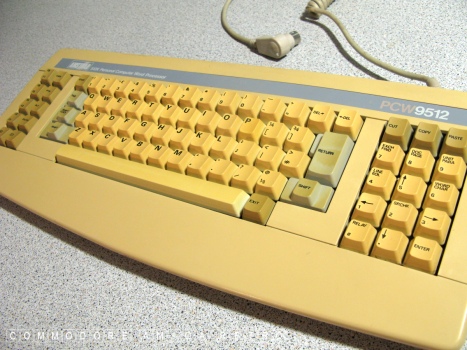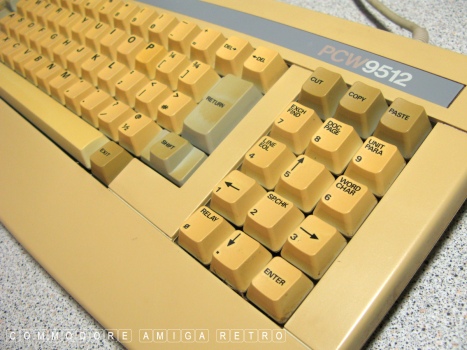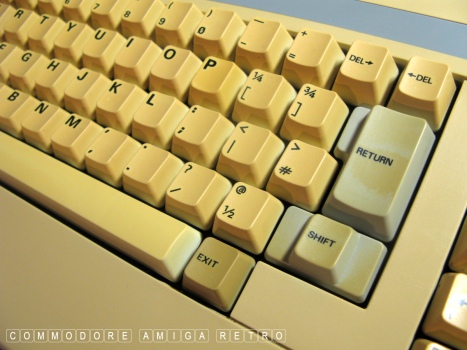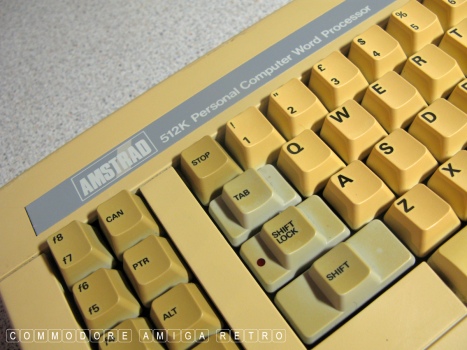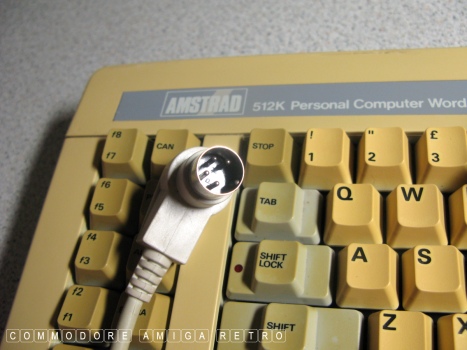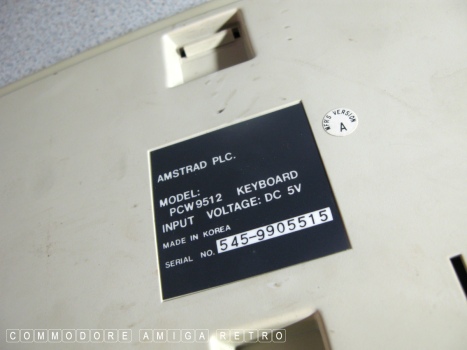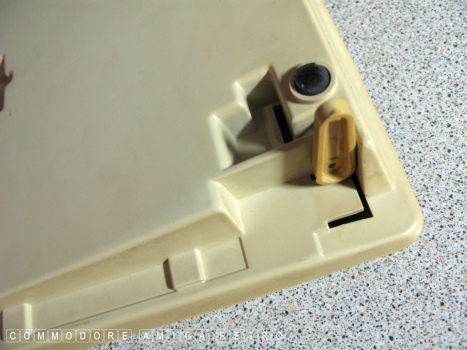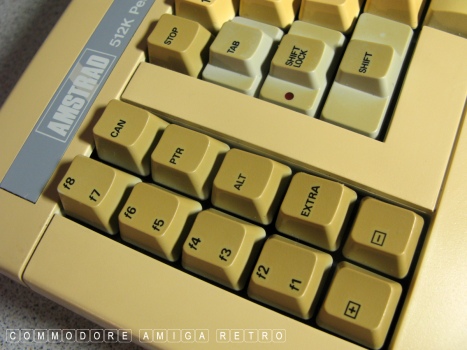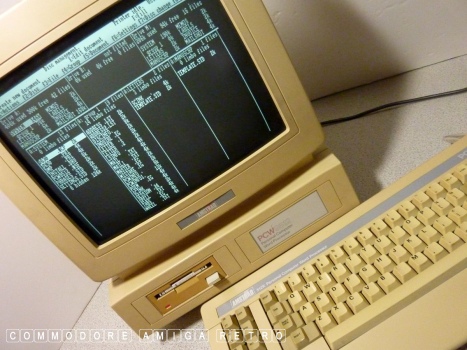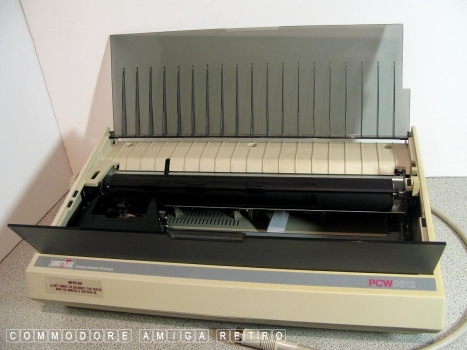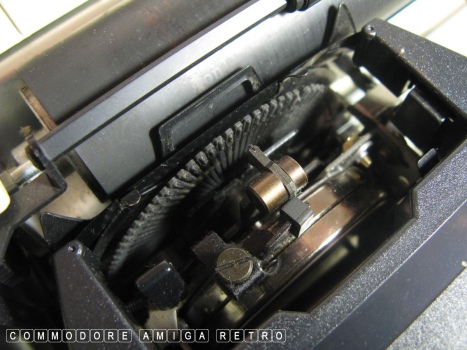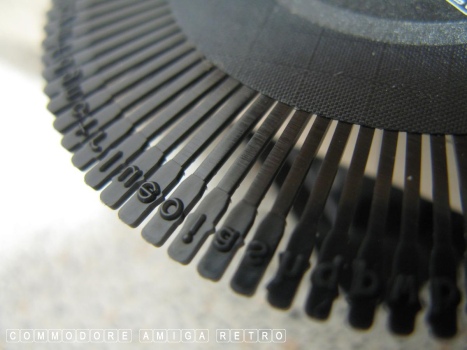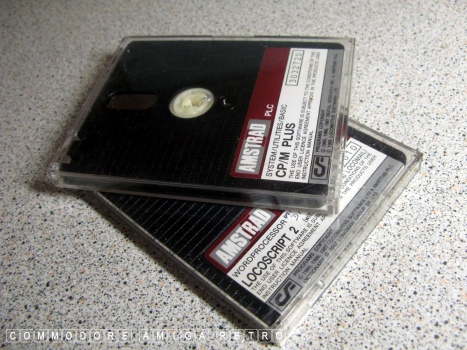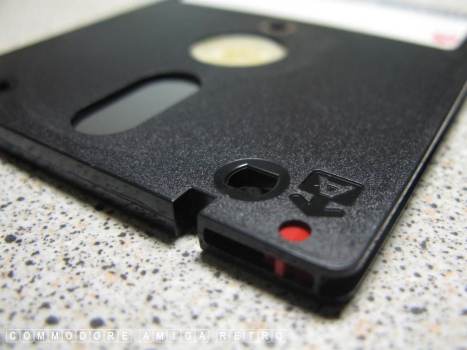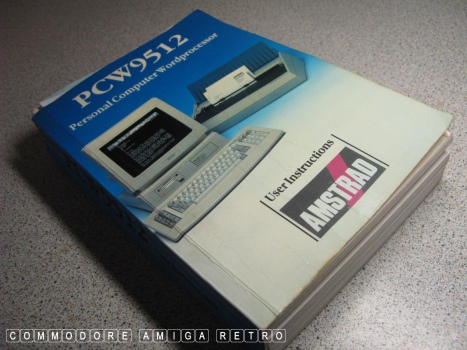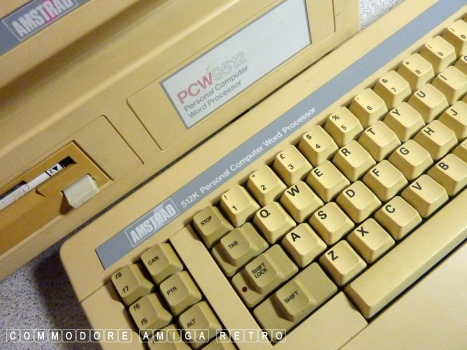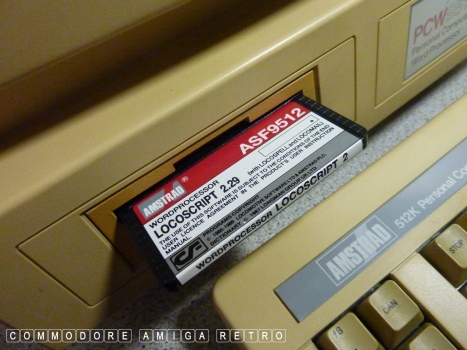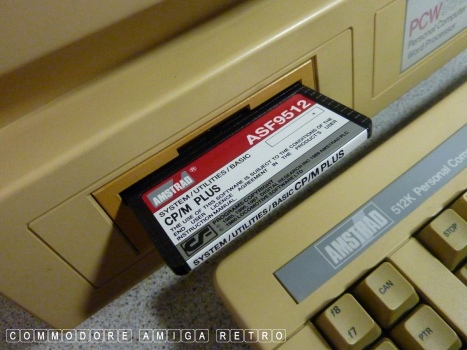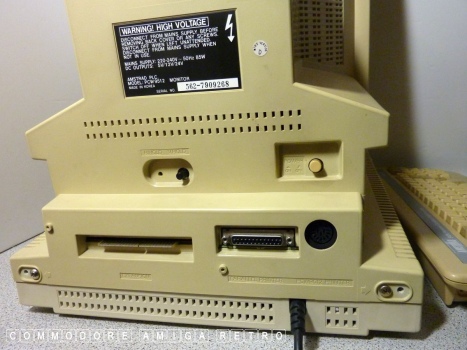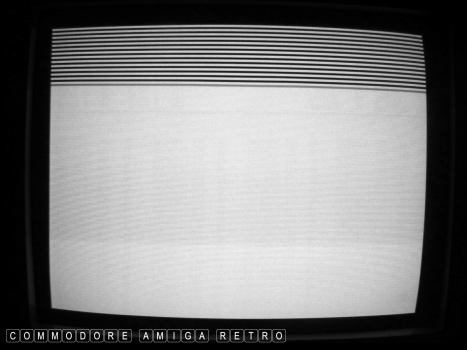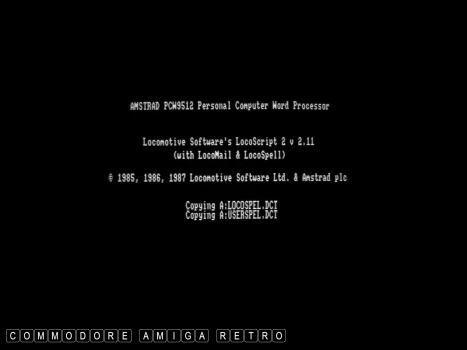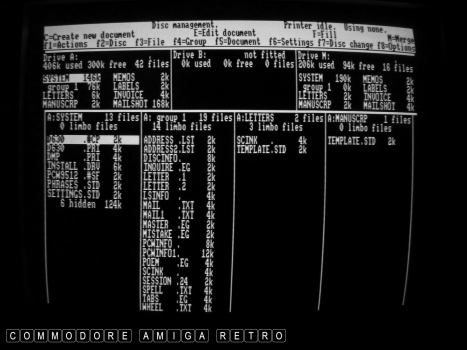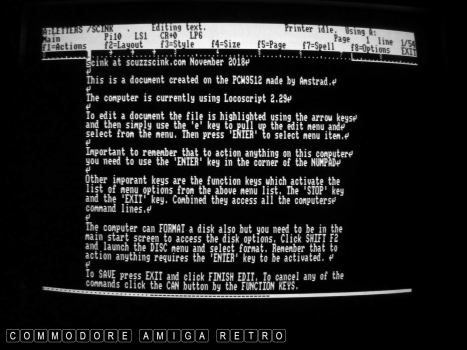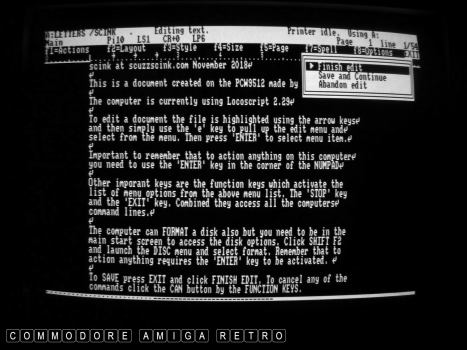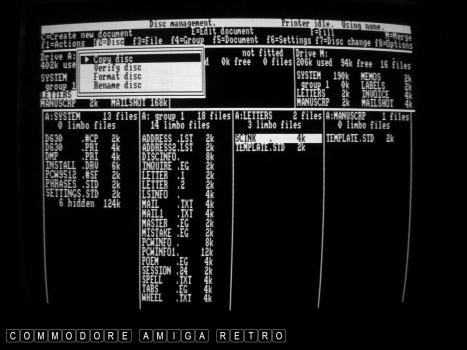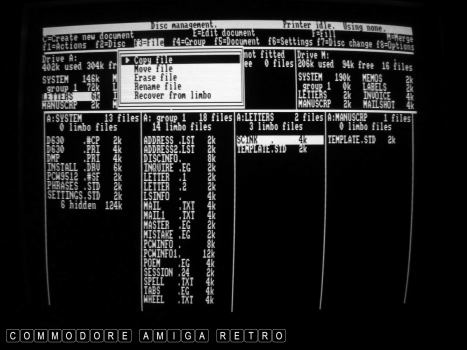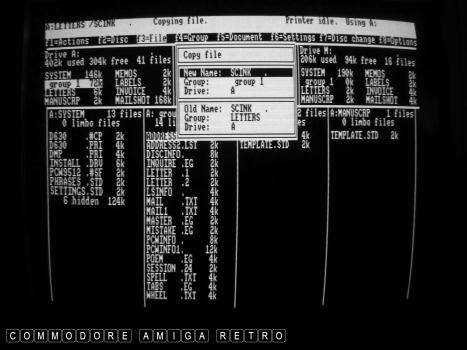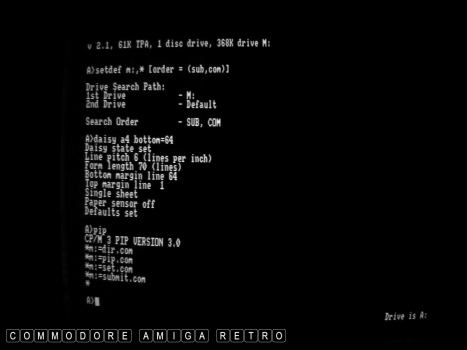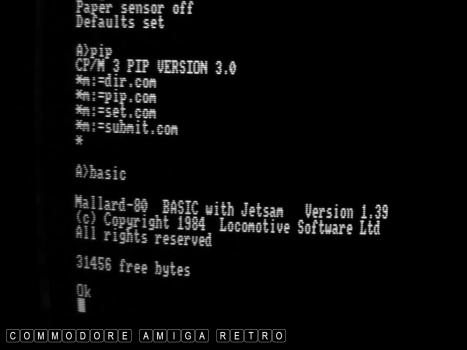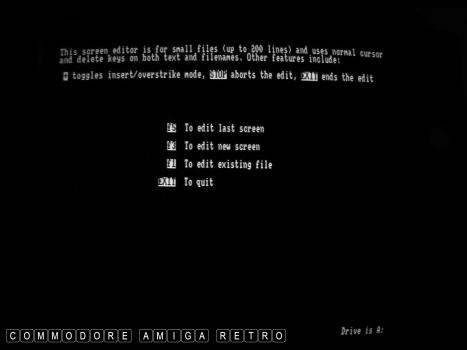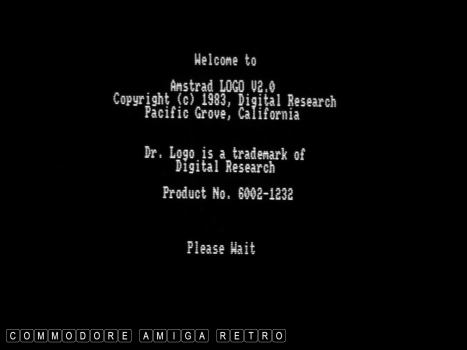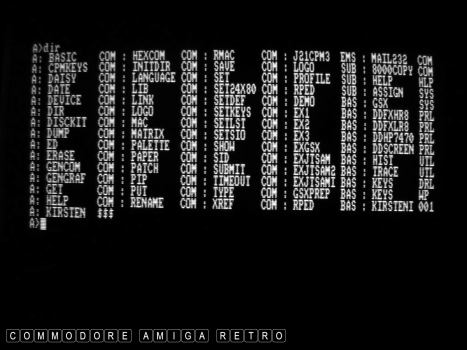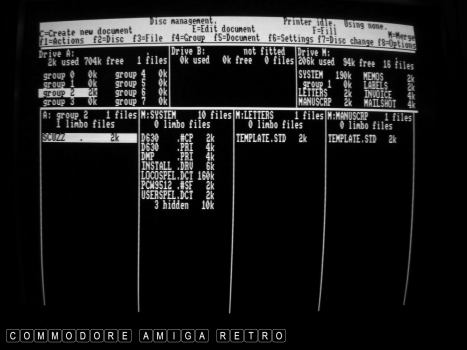
The welcoming boot lines of the Amstrad.
The Amstrad loads the 3" compact for Locoscript.
Although you do not have a mouse you do
Drive A breaks down into groups to make
I wrote this little guide explaining
Pressing EXIT lets you finish your edit
Using the function keys you have all
Files can be saved, copied, moved etc
In truth it's the best file manager I have
The process of file management always
With the computer you also get a full working
With CP/M you got Mallard BASIC. Which
My favourite BASIC command to this day is this ...
And then there was RPED which was Amstrad's
There was also Amstrad LOGO V2.0 which I
The directory dump of CP/M commands.
One final point. This screen represents a
Sounds kinda obvious now but in the day being
Like I say there was no mouse but after a while
The computer had the built in monitor and
I loved my PCW9512 and still do.
ScuzzBlog: Diaries November 2022
Entry 18th November 2022: Post 1: PCW9512 - Living without a mouse.
PCW9512 - Living without a mouse.
A few weeks ago I was tempted to buy a spare keyboard for the
PCW9512 that came up on the Bay. I have been troubled for some
time as to how utterly useless the computer would be without the
keyboard. Sadly the keyboard is quite unique so getting another
may prove a struggle. Fortunately whilst on my adventure into the
loft the other night I happened across a pile of old printers and
in amongst them popped out this PCW9512 keyboard. There was also
the remnants of an old PCW9512 which still holds the record for
being the only computer I have managed to blow up. Just a safety
tip never touch an old cathode tube with a screwdriver, no matter
how long its been switched off. Was both scary and hilarious.
So I dragged the keyboard onto the bench and gave it a clean. Not
the most yellow bit of computer kit I have but still it's not like
that kind of thing ever troubles me. I now have a spare to go the
trusty PCW9512. Got me thinking about just what life really was
like in the 1980's for a home computer user without a mouse.
First up a few dateline milestones:
1983 The first real GUI an Apple Lisa at 9995 dollars.
1985 The Amiga 1000 running Workbench at 1285 dollars.
1985 The Atari ST running GEM at 799 dollars.
1987 October Amiga 500 at 699 dollars or 499 pounds.
1987 Mac II would set you back 5498 dollars.
1987 Acorn Archimedes cost in the UK 800 quid.
1987 PCW9512 cost in the UK 499 and included a monitor and printer.
It is very easy to perceive the world as it was as being just an
older version of what we have today. May sound obvious but it is
way more complex. Take for instance regional differences. The
attitude of users varied far more significantly across the globe
and there was less readiness to accept certain technologies, in
the home, where money was used on more beneficial products. In
the UK the home computer was seen very much as a kids toy which
would normally sit under the TV. The idea of cashing out the very
large sums needed for a more expensive system was just out of the
question. Additionally the parents and cash providers, would have
grown up during a period where there were no computers and were
not ready to prioritise this on their needs list. Seriously, if
a family was considering shelling out 500-1000 quid on anything
it would probably be a new washing machine, fridge and 3-piece
lounge furniture or TV.
I know that there were computer enthusiasts in the day with cash
to burn, but these were not the norm. Most that grew into the
home computing era were like me slowly evolving from a modest
outlay on say a ZX81 at 44 quid. You certainly didn't feel like
the second rate user at first cus there wasn't much else about.
Things did change with the Dragons and C64s but on the whole the
evolutionary path from ZX81 to 16K Spectrum to 48K Spectrum and
then the +2 seemed about as advanced as you would expect with
the cash available.
Also important is the way information was conveyed. There was no
internet, no mobile phones, and no specific interest in computers
in the media and magazines. The subject was still in its infancy
and was being treated as a hobbyists activity. There had been a
massive growth in the sale of video games but the normalising of
the computer as placeholder in the home was yet to become the
norm.
I say all this cus I often look back on my own decision to opt for
the PCW9512 as a little odd given that I was aware of the other
systems that were coming onto the market. The problem was more to
do with the overall cost of these systems. I had looked hard at
what I could afford and when I totted up what a lot of these other
systems truly cost with the monitor and printer it was in realms
of a 1000 quid plus. I could have used a TV, but sadly I had just
paid for a Spectrum +2 and pretty much decided the era of the TV
was over for this type of activity. Interestingly my dad was very
keen on the Amiga but hung off buying one till the 500 came out,
basically cus of the cost. Also interesting is that the standard
by which you valued things was on whether it was affordable by
your dad but not you. Kids rarely paid out more for kit than what
their parents did. [ think about it ].
Anyhoo when I finally made the decision to dump the Spectrum and
get 'a real computer' I chose Amstrad cus Alan Sugar like Sir Clive
liked to give the British punter kit at an affordable price. He
was keen to sell the whole package, and bless him, did like a good
word processor. Interesting that he wouldn't release an OS without
a text editor and that is why we have RPED or Roland Perry's EDitor.
Digital Research included the text editor cus Alan Sugar insisted
on one.
The PCW9512 is a mouse-less, black and white, GUI-less Word Processor
and yet the keyboard made the magic, and this is what made using
the computer so special. There was a kind of graphical interface
but to activate it you needed to have a good understanding of what
all the various functions keys did and how menus were raised and
closed. Operations were set a key function and with time the speed
of your processes gained speed at an increased rate. Using the
computer was like playing an instrument and the keyboard was in
truth just that.
I certainly got my moneys worth out of the PCW and I wrote so much
over the years. Nights were spent writing books, word processing
or writing text based games in BASIC. And so I was blessed with my
very first real computer buddy. A true friend that helped me through
some of the most difficult times of my life. She never let me down
and proved to me that a computer would for ever hold a very very
important place in this particular home.
My thoughts often at this time on a cold Novembers night like this
go back to 1992 when the PCW9512 was on its last legs with failing
drive and printer hammer set to fracture once more. She pulled
through for another year thankfully, aided that November by Deacon Blue.
I wouldn't want to be you
Mostly not even near you
When you're gone they will curse you
And raise the tide against you.
Ricky Ross is for me one of the most underated
song writers of our time.
PCW9512 - Living without a mouse.
have some very significant keys that
allow you to almost work the interface
as a mouse.
file management much easier. You can move
any file to any group. You also have access
to the computer memory Drive M.
some of the key features.
and save the document. Remember this is
primarily a word processor.
the basic functions for disc and file
management. Whilst being a WP the interface
lets you work on all files of any disc.
and again this applies to any file on
a disc. So all program files can also
be edited accordingly.
ever used. It is way better than DOS.
presents a graphical interface allowing
to not only name, but to name a group
and then move to it.
version of CP/M Plus for the Amstrad. Man did I
spend a load of time using CP/M.
was a dream compared to the SPECTRUM.
CHAIN MERGE "file.bas",50,ALL,DELETE 50-300
which allowed me to clear the current program
from memory and merge it with the new carrying
over all the variables and various lines. With
such limited memory it was essential.
very own text editor. Thing was it was so
versatile it could be used as a very good
DATA BASE manager. That is what I used it for.
went bonkers over and spent way too many
all nighters playing with. Crazy fun.
fresh formatted disc. Note the new file I
created in Group 2. The M:System represents
groups stored in memory. If you can think as
M: as the RAM on an Amiga. I had never before
had so much control over memory. Thing was you
manage discs and copy, erase and format and never
switch the computer off.
able to store a file in memory, format a new
disc and then simply copy it back was just
fantastic.
of using the keyboard you didn't even notice.
Again in these days the mouse was a novelty
and the Spectrum didn't have one.
daisy wheel printer as standard. There was an
additional bay for the second drive.
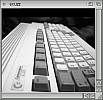
If you can only see this CONTENT window
then click the image above for the full site
Last updated 18th November 2022
Chandraise Kingdom
![]()
Keep the Faith
scuzzscink 2022

